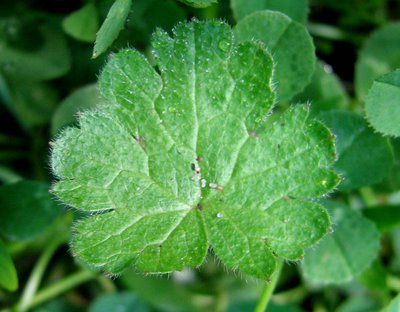


22 July 2006. Much has been happening in the last few weeks. The first flowering plant, the groundsel, has shed all its seed and died, but has scattered babies everywhere on the windowbox. I will leave them for the time being as I tend to believe, à la Goethe, that plants work as ecosystems rather than as individuals.
The white clover has recovered from its fierce pruning and is spreading out again, and the sprouts from the sallow log are now longer than the log itself.
There are still many small plants I cannot identify: a seedling with purplish leaves, maybe a sow thistle (see photo); a tiny, dark green trailing plant which grows very slowly to the east of the sallow log. There is also one pearlwort, Sagina procumbens, a birch – Betula and a stinging nettle, Urtica dioica (see photo). However, vegetation cover is sparse, maybe 10%, and growth of many species painfully slow.
The pearlwort is difficult to photograph, but when I did I noticed it was home to some very tiny orange aphids (see photo)











